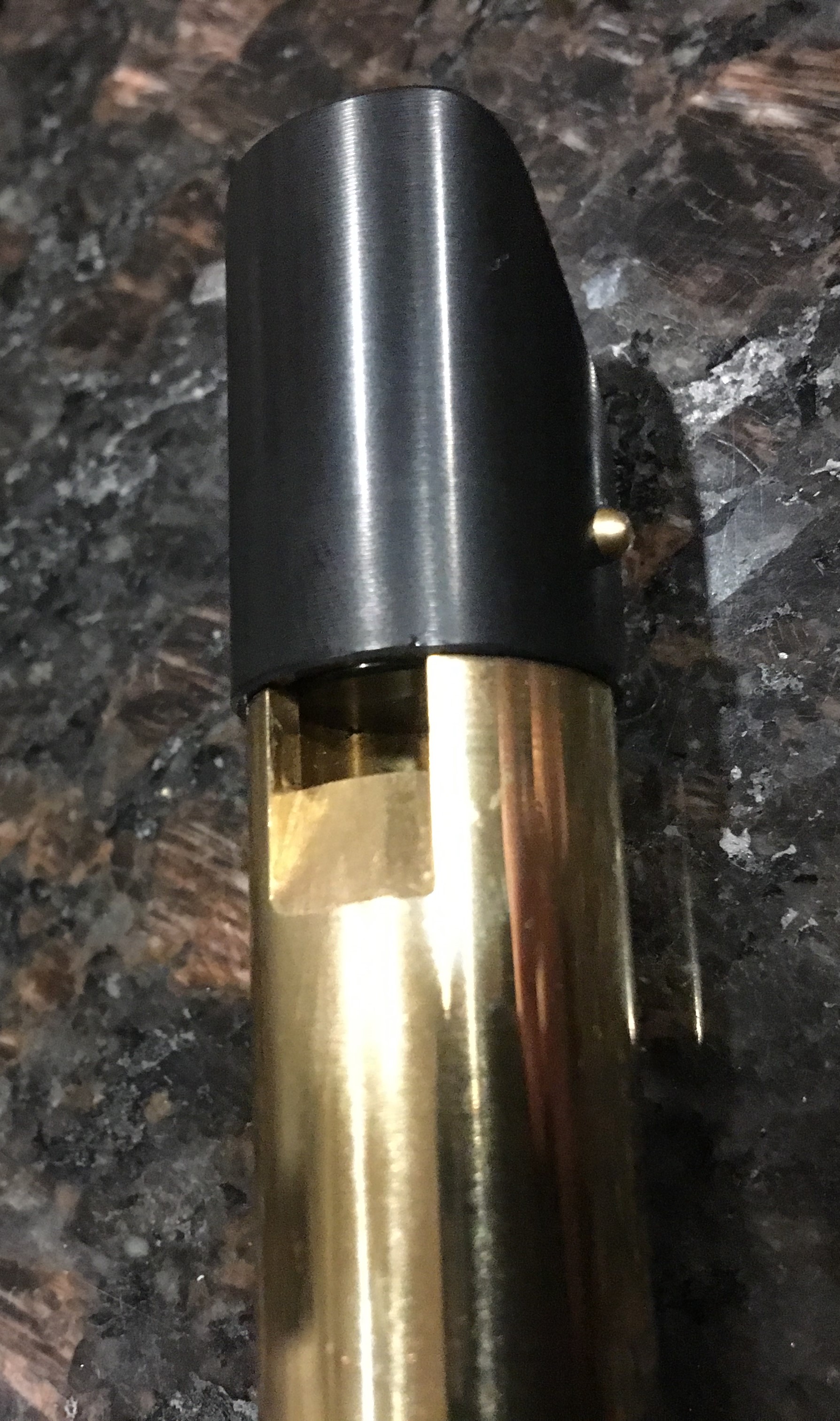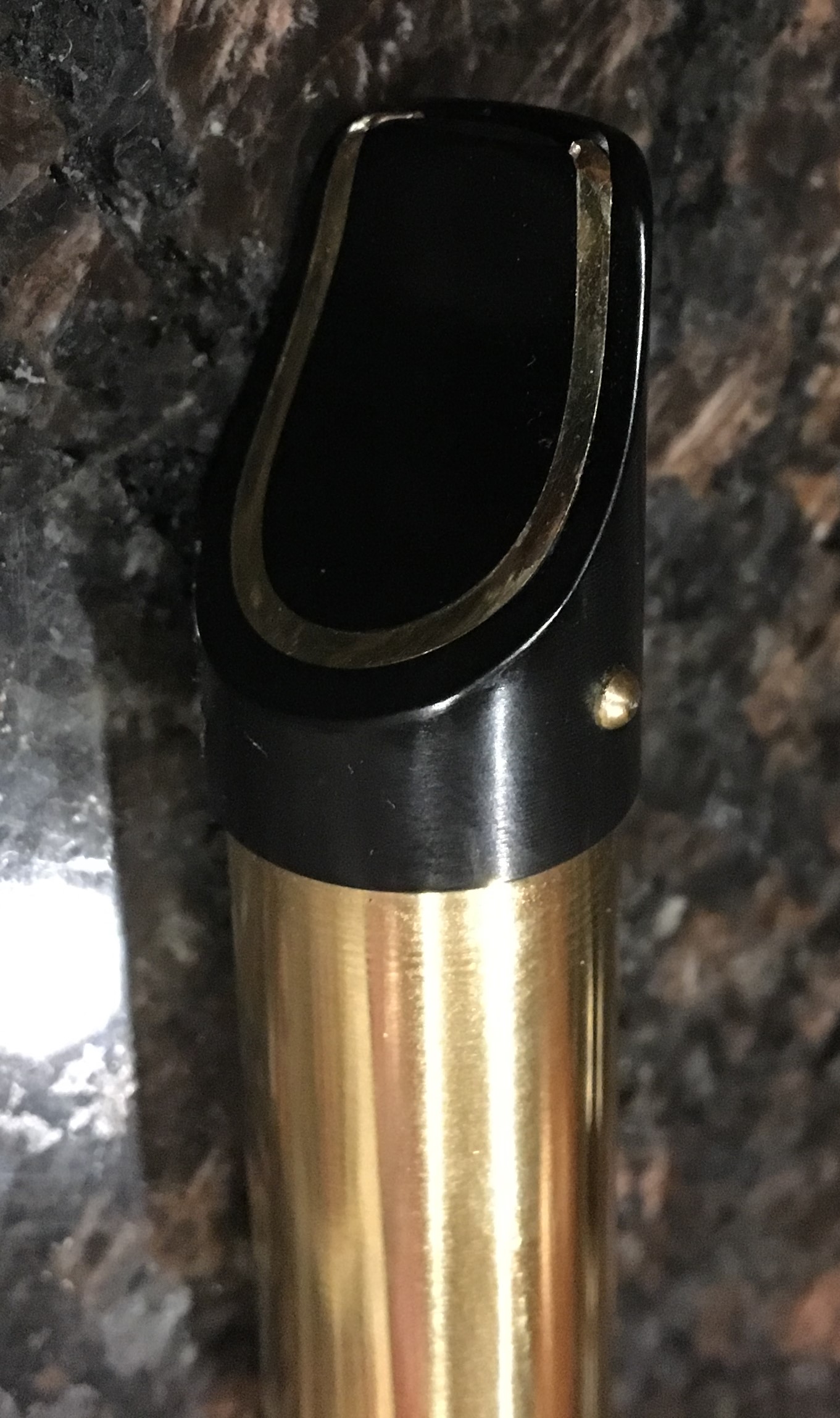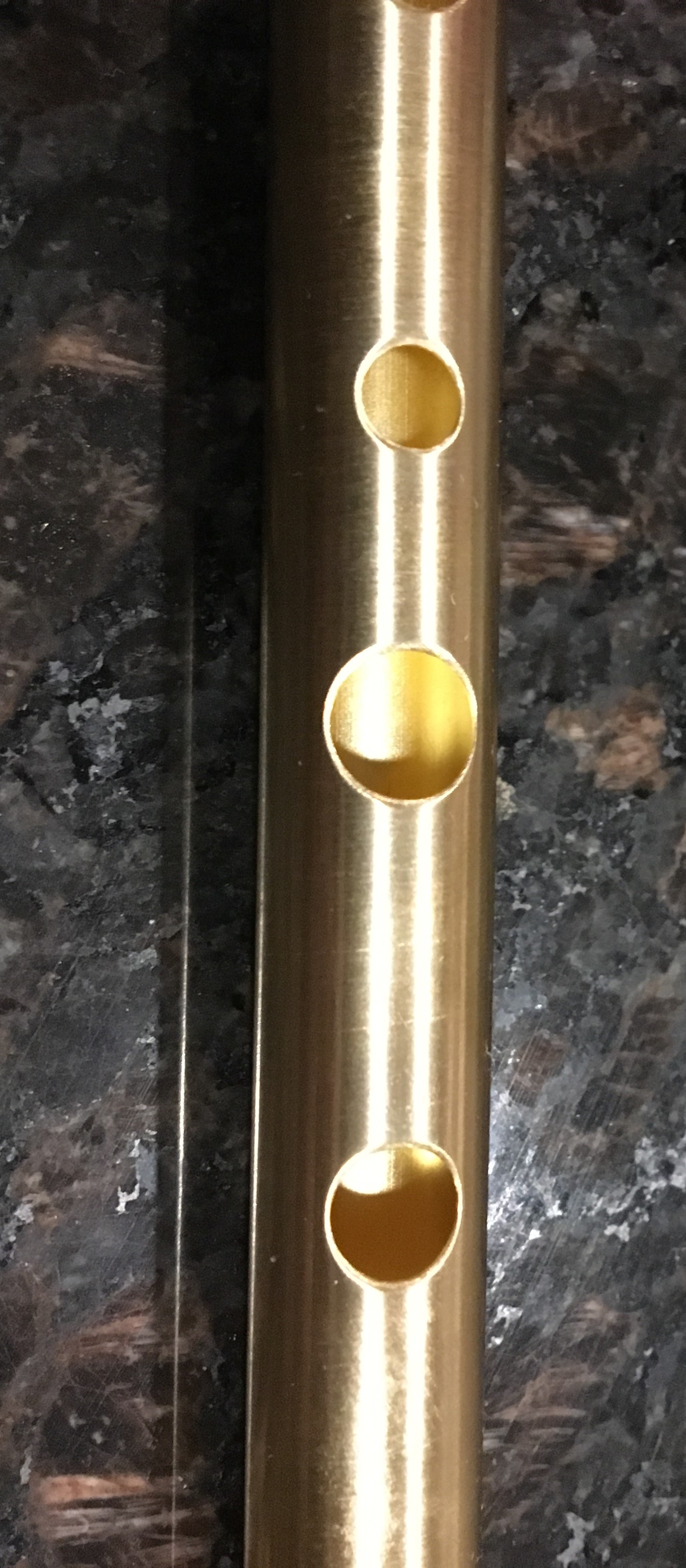Killarney Brass Body D Review
(Review written June 2018)
- Preface
- I've been hearing good things about Killarney whistles for a while now. They are hand-crafted instruments produced in Killarney, Ireland by Padraig Buckley and Tadhg Buckley. I've heard it called the "Poor Man's Sindt", referring to the Sindt brand of whistles. Sindt whistles are known for their pure drop sound like old school whistlers could get out of Generation whistles. But Sindts are also known for good craftsmanship and quality control. So, of course, I had to see what all the fuss was about.
- At a Glance
- Whistle Reviewed
- Killarney Brass Body D
- Models Available
- C, D and Eb whistles in nickel and brass bodies
- How Acquired
- Purchased secondhand
- Construction
- Tunable brass mouthpiece with delrin tip whistles with nickel or brass bodies.
- Price at Time of Review (in US Dollars unless otherwise noted)
- €74
- Available From
-
Killarney Whistle Company Direct from the manufacturer
- Appearance
- I got the brass-bodied version. I don't know if the brass has been treated, because the whistle is quite shiny and shows no signs of tarnishing. The quality and construction are top notch, and I have nothing negative to report.
-

Here's a shot of the full whistle. It's quite the looker, in a simple, understated way. It's not flashy, but it still looks nicer than a plastic-topped cheapie whistle. The tuning slide is incorporated into the mouthpiece, so it doesn't stand out.
A closeup of the mouthpiece. I believe the plastic tip is made of Delrin, and it's been polished nicely. The labium ramp appears to have been milled very precisely, but I can see some signs of hand-tooling if I look at the ramp through a magnifying glass. That tells me that even if these things were produced via CNC or some other manufacturing process, the makers still take the time to hand-voice the instruments.
The back-side of the mouthpiece. This whistle is a standard 3-piece sandwich design that I've come to expect from many makers. Brass pins hold everything together, so you won't have to worry about the glue failing on the Delrin bits (which is notoriously hard to glue). They also will keep your whistle from rolling off the table!
The last three holes of the whistle. All of the holes are nicely centered on the body, and the holes themselves have been polished to remove any sharp edges. They feel very nice on the fingers.
- Playing Characteristics
- Bright, extremely responsive, easy to blow, and louder than I expected.
-
Sound clips of the whistle:
Calliope House
Video clips of the whistle:
Dunmore LassesTone: Definitely old-school pure drop. A wee bit raspy, and very bright sounding. But, as I mentioned above, it wasn't raspy enough to annoy me. I really enjoy the sound of this whistle.
Volume: Louder than expected. It's not my loudest whistle by far, but it's louder than any of the inexpensive whistles I own, and I think it'd stand up nicely in a medium sized session. Unfortunately, it doesn't really hold up in my truly rowdy Sunday session--if I'm starting a tune, I have to switch to a louder whsitle so the other musicians can hear what I'm doing. Though if I'm not the one starting the tune, it still blends in nicely there.
Responsiveness: Extremely quick and nimble. This whistle can do anything I ask of it, crisply and effortlessly rolling off ornamentation as quick as I can play it.
Tuning: With the tuning slide all the way in, this whistle is 45 cents sharp. All the way out, it's 30 cents flat. That's an awesome range, and more than most people will ever need. The whistle is in tune with the expected breath requirements, increasing slightly as you go up the range. The A and B notes require a touch more push to be in tune, but it's nothing extreme.
C-natural: While this whistle has been compared to the Sindt, there's an important difference: The OXXOOO C-natural. The Sindt whistle is notoriously sharp here, and you have to half-hole that note. My Killarney is only 6 cents sharp with the standard cross fingering, and you can bring that under control with your breath, OXXOXX brings it down another couple cents. Since it's so close, and can be managed with the breath, I already like this whistle much better than the Sindts I've played, because I don't have to retrain myself to play those notes.
Hole size and placement: The holes on this whistle are fairly medium-sized, and are centered nicely on the body. As with many designs, the E and F# holes are closer together, but they aren't so close that my chubby fingers touch when playing this whistle. It's a pretty typical configuration, and I had no issues just picking the whistle up and playing from the get-go.
Air volume requirements: On the low side of average. I picked the whistle up and played it for a good 90 minutes when I first got it, and didn't find myself gasping or running out of breath in odd locations.
Air pressure requirements: Also on the low-side of average, as far as high-end whistles go. It takes a little more push than some of the inexpensive models (like Generation, Oak, or Clarke Sweetone), but not much.
Clogging: Very low. I played this whistle for an hour and a half when I first got it. I didn't warm it up first, I didn't treat it with duponol. I can't smell duponol or soap in the windway, so I don't think the prior owner treated it either. But I didn't have any clogging issues at all. I attribute that to the mostly-Delrin construction in the part of the mouthpiece that channels your breath.
Wind Resistance: Surprisingly good. It was able to stand up to a soft breeze, and only really started to cut out once the wind got a little stiffer. I was able to adjust my body slightly to bring the sound back, but never had to actually turn my back to the wind.
- Summary
- This whistle definitely has that pure drop sound. It's got that scratchiness and bright sound that I've come to expect from recordings by some of the old masters. That said, the Killarney comes across as more subtle and and I don't find the bit of raspiness or squeaking nearly as annoying as I do in some brands of whistles. I find myself really liking this whistle, and expect to be playing more of it.